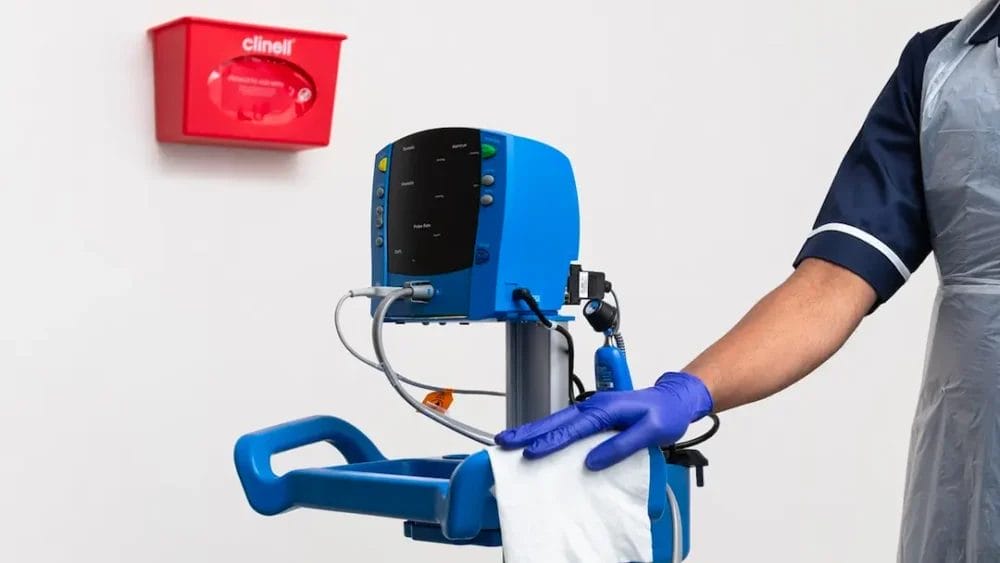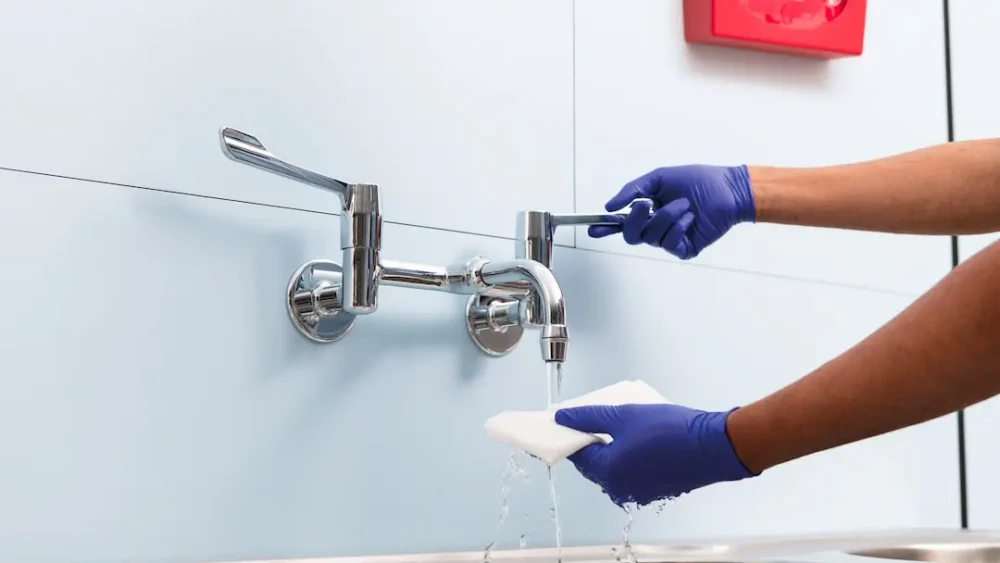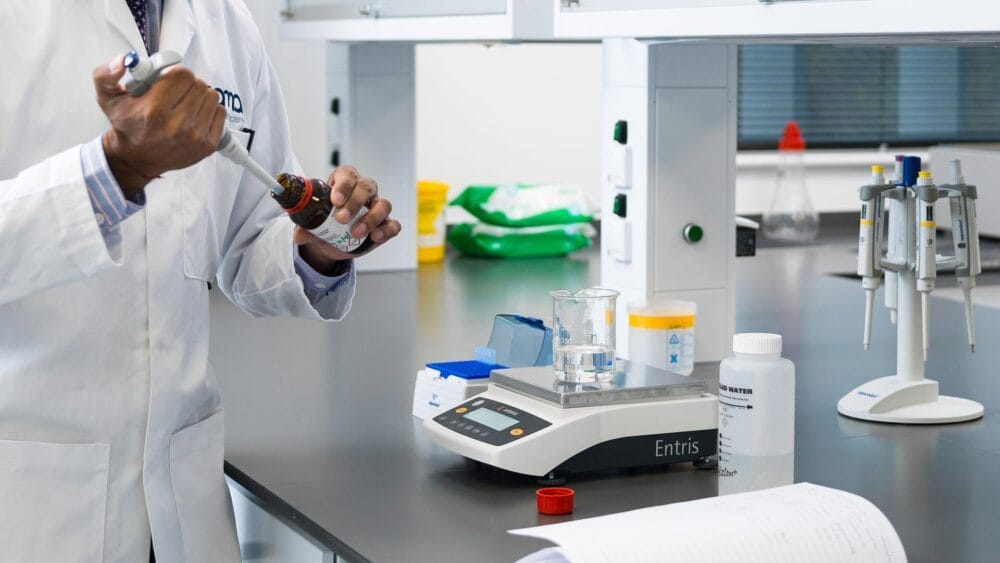Posted
17th December 2021
Products
Clinell’s famous red wipes have a new name: Clinell Peracetic Acid Wipes (previously ‘Sporicidal Wipes’). To match, they have a bank of evidence which supports their use for the prevention of outbreaks caused by high risk and hard-to-kill microorganisms.
2008 was a special year for GAMA Healthcare. Not only were we awarded our first NHS contract in the UK, but we also introduced a new product to market. These wipes, wrapped up in a red packet, were the most powerful disinfecting wipes available. Able to kill the hardiest microorganisms, including spores, they were given the name ‘Sporicidal Wipes’.
Meet ‘Clinell Peracetic Acid Wipes’
Now named ‘Peracetic Acid Wipes’, our famous red wipes have since become one of the UK’s most trusted wipes for surface disinfection and cleaning of non-invasive medical devices. Along with our Universal Wipes (their green counterpart), they are iconic to healthcare workers across the UK. Well deservedly too.
Constructed with patented dual-layer technology, our red wipes contain some of the most powerful biocides, including peracetic acid – the inspiration for the newly named ‘Peracetic Acid Wipes’.

How does peracetic acid work?
Peracetic acid is a powerful oxidising agent, which can interact with the molecular structure of microorganisms; making them unstable, causing them to break down and eventually leading to cell death. So now you’re thinking… what’s the catch? Well, peracetic acid is usually difficult to work with as it breaks down quickly – a hurdle that GAMA has overcome with the help of some very clever material scientists.
Our peracetic acid wipes contain the precursor molecules needed to generate peracetic acid (and other biocides), however, they only become active when they come into contact with water. When you run a Peracetic Acid Wipe under water, advanced chemistry produces the powerful blend of biocides needed to tackle microorganisms that are hard to kill, including bacteria, viruses, fungi and spores.[1]

What are biofilms?
Some of the hardest-to-kill microbes live inside biofilms. Bacteria are typically thought of to exist in a free-floating, planktonic state. However, they can attach to surfaces and secrete substances which form a ‘matrix’ – more easily pictured as slime – which protects them from external threats such as antimicrobials.
Biofilms are quite difficult to remove. Sheltered inside the biofilm, bacteria can replicate and exchange genetic material (including antibiotic resistant genes). Unless removed, biofilms can seed bacteria back into the environment. In hospitals, this means that they have been increasingly linked to healthcare-associated infections.

Biofilms: the cause of challenging outbreaks?
Some outbreaks are difficult to resolve. It’s now thought that dry surface biofilms may be the answer.[2] Where biofilms have formed, standard methods of sampling may struggle to identify signs of contamination. It’s only when a sample of the surface itself is collected and cultured in a microbiology lab, that we can truly see the potential source of the problem.
Despite diligent disinfection, biofilms can recover quickly and continue spreading infection. Peracetic Acid Wipes eradicate dry surface biofilms, without the need for pre-cleaning. Their high-performance means that they are suitable for enhanced disinfection and offer better protection against organisms than chlorine disinfectants,[3][4] – something that’s been proven in real-world studies![5]
IPC and innovation are at the heart of what we do at GAMA Healthcare. Our Clinell product range is the gold-standard in environmental hygiene. Together with the rest of the range, Peracetic Acid Wipes offer a complete solution for everyday decontamination, terminal cleaning and outbreak response.
Find out more about Clinell Peracetic Acid Wipes by visiting our product page or if you’d like to arrange a trial, get in touch via our Contact Us page.
References :
[1] McDonnell G, Russell AD. Antiseptics and disinfectants: activity, action, and resistance. Clin Microbiol Rev. 1999 Jan;12(1):147-79.
[2] Vickery K, Deva A, Jacombs A, Allan J, Valente P, Gosbell IB. Presence of biodilm containing viable multiresistant organisms despite terminal cleaning on clinical surfaces in intensive care unit. J Hosp Infect. Jan 2012;80(1);52-55.
[3] Humphreys PN, Finan P, Rout S, et al. A systematic evaluation of a peracetic-acid-based high performance disinfectant. J Infect Prev. 2013;14(4):126-131.
[4] Saini H, Westgate R, Maillard JY. Impact of antimicrobial wipes compared with hypochlorite on environmental surface decontamination in a health care setting: A double-crossover study. Am J Infect Control. Oct 2018;46(10):1180-1187.
[5] Martin ET, Dadon M, Lazarovitch T, et al. Cleaning high touch surfaces of patients’ rooms: Make it easier, and it simply gets cleaner. Open Forum Dis. 2018;5(S1):S346.
SHARE THIS ARTICLE
Tags
Latest News
Introducing HEXI HUB: A seamless transition in our product line
We’re pleased to announce an update to our product offering…
Innovative solutions for tackling Carbapenemase-producing Enterobacteriaceae (CPE) at King’s College Hospitals
King’s College Hospital NHS Foundation Trust, one of London’s largest…
Gloves Off: reducing unnecessary plastic waste during environmental cleaning and disinfection
In this blog, Dr Phil Norville discusses the momentum-gaining ‘Gloves…
Gloves Off: Navigating SDS sheets and skin safety claims in environmental decontamination products
In this blog, James Clarke (Head of R&D, Science &…




